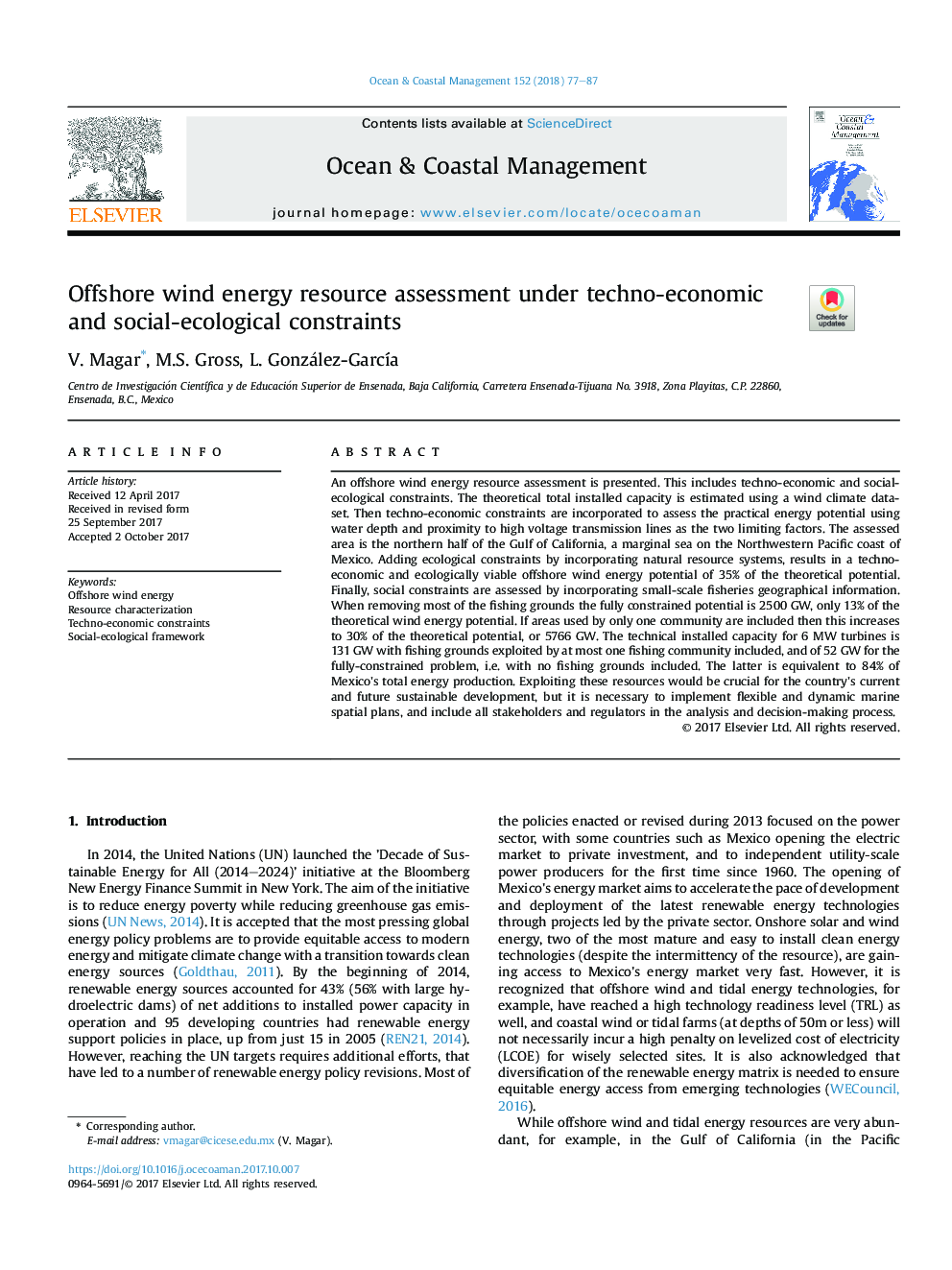| Article ID | Journal | Published Year | Pages | File Type |
|---|---|---|---|---|
| 8060894 | Ocean & Coastal Management | 2018 | 11 Pages |
Abstract
An offshore wind energy resource assessment is presented. This includes techno-economic and social-ecological constraints. The theoretical total installed capacity is estimated using a wind climate dataset. Then techno-economic constraints are incorporated to assess the practical energy potential using water depth and proximity to high voltage transmission lines as the two limiting factors. The assessed area is the northern half of the Gulf of California, a marginal sea on the Northwestern Pacific coast of Mexico. Adding ecological constraints by incorporating natural resource systems, results in a techno-economic and ecologically viable offshore wind energy potential of 35% of the theoretical potential. Finally, social constraints are assessed by incorporating small-scale fisheries geographical information. When removing most of the fishing grounds the fully constrained potential is 2500Â GW, only 13% of the theoretical wind energy potential. If areas used by only one community are included then this increases to 30% of the theoretical potential, or 5766Â GW. The technical installed capacity for 6Â MW turbines is 131Â GW with fishing grounds exploited by at most one fishing community included, and of 52Â GW for the fully-constrained problem, i.e. with no fishing grounds included. The latter is equivalent to 84% of Mexico's total energy production. Exploiting these resources would be crucial for the country's current and future sustainable development, but it is necessary to implement flexible and dynamic marine spatial plans, and include all stakeholders and regulators in the analysis and decision-making process.
Keywords
Related Topics
Physical Sciences and Engineering
Earth and Planetary Sciences
Oceanography
Authors
V. Magar, M.S. Gross, L. González-GarcÃa,
